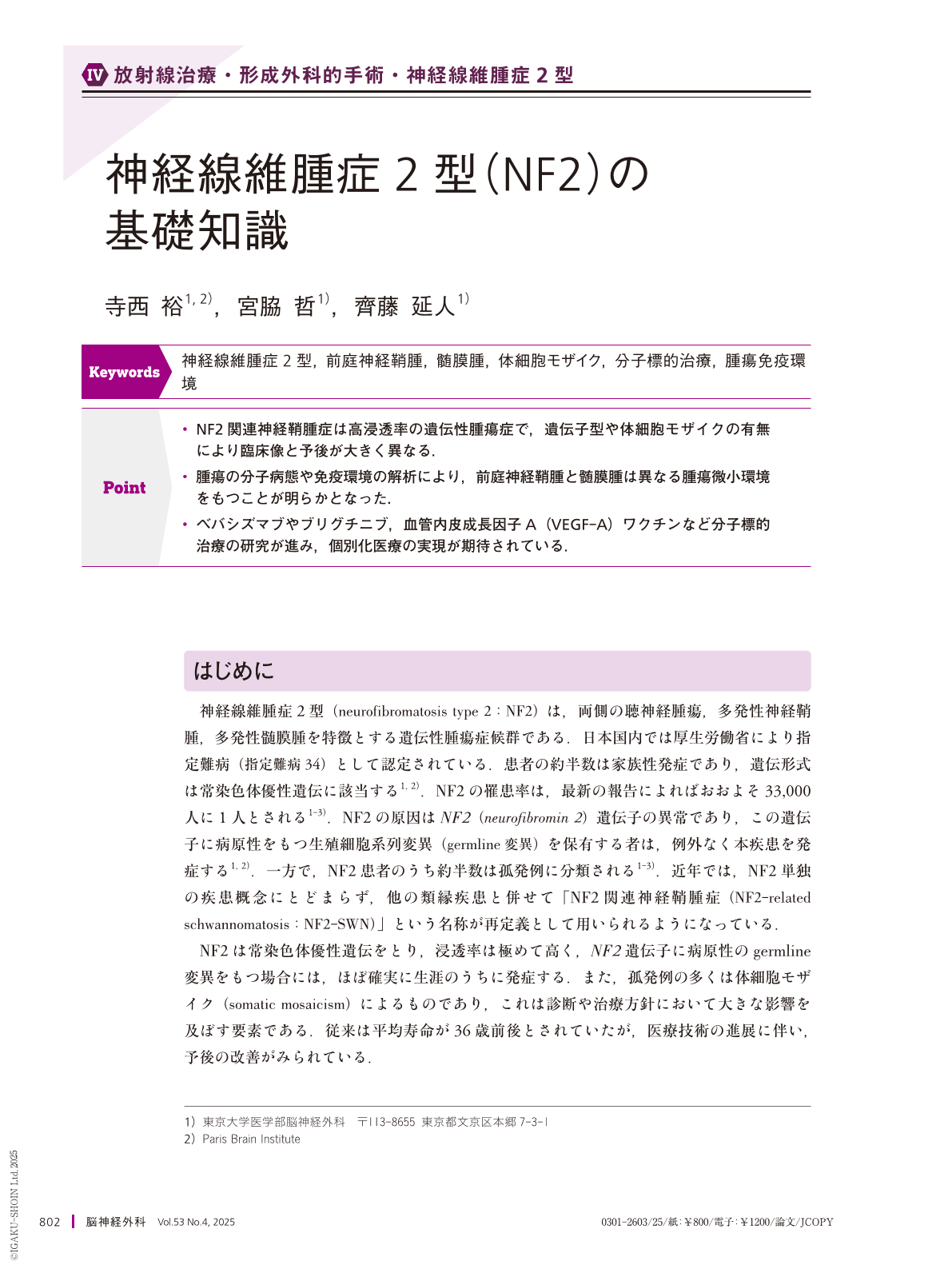Japanese
English
- 有料閲覧
- Abstract 文献概要
- 1ページ目 Look Inside
- 参考文献 Reference
Point
・NF2関連神経鞘腫症は高浸透率の遺伝性腫瘍症で,遺伝子型や体細胞モザイクの有無により臨床像と予後が大きく異なる.
・腫瘍の分子病態や免疫環境の解析により,前庭神経鞘腫と髄膜腫は異なる腫瘍微小環境をもつことが明らかとなった.
・ベバシズマブやブリグチニブ,血管内皮成長因子A(VEGF-A)ワクチンなど分子標的治療の研究が進み,個別化医療の実現が期待されている.
Neurofibromatosis type 2 (NF2), now redefined as NF2-related schwannomatosis (NF2-SWN), is a hereditary tumor syndrome characterized by bilateral vestibular schwannomas, multiple meningiomas, and other central nervous system tumors. The revised diagnostic criteria incorporate genetic testing and consideration of somatic mosaicism, enabling a more accurate and earlier diagnosis. A strong genotype-phenotype correlation has been established: truncating mutations are associated with an earlier onset and severe clinical course, whereas missense or splice-site mutations are often linked to milder phenotypes and better functional outcomes. Immune and molecular profiling have revealed distinct subtypes of vestibular schwannomas and meningiomas, reflecting differences in tumor behavior and therapeutic responses. In young patients presenting with unilateral vestibular schwannoma, clinicians should remain alert to the possibility of NF2-SWN and consider surveillance based on progression and genetic background. Targeted therapies—including bevacizumab, brigatinib, and vascular endothelial growth factor -A vaccines—have shown promise, particularly in refractory cases. Although routine intensive surveillance is not universally required, early genetic screening and long-term follow-ups may benefit select individuals. The comprehensive integration of genetic, pathological, and immunological data is essential for advancing personalized treatment strategies for NF2-SWN.

Copyright © 2025, Igaku-Shoin Ltd. All rights reserved.


